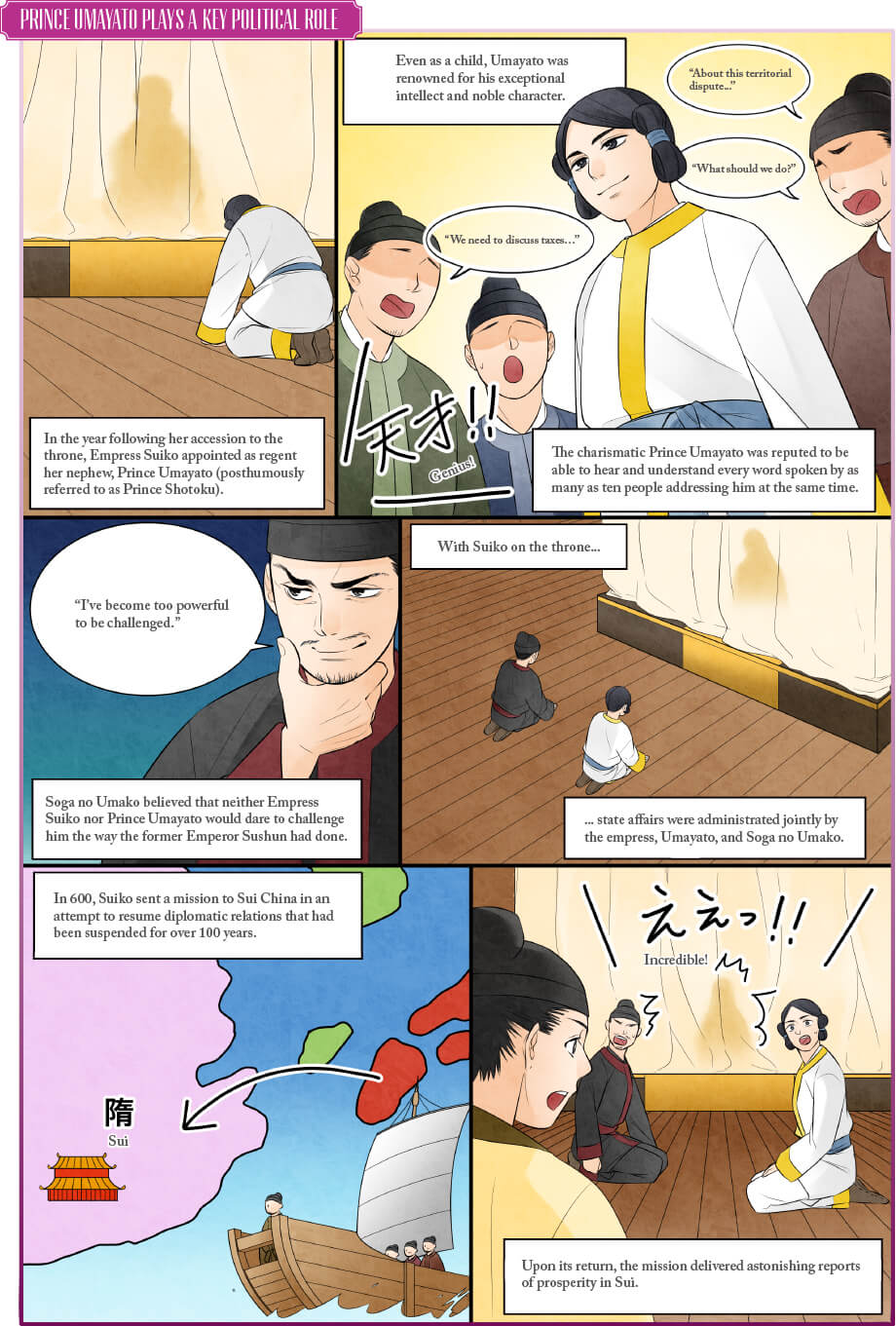Bringing advanced Chinese culture and political reform to Japan, while balancing power between Prince Umayato and Soga no Umako
Hastening the development of Japanese civilization
To quell political discord over the introduction of Buddhism, Empress Suiko gave official recognition to that religion and promoted its propagation through the issuance of the Flourishing Three Treasures Edict. Before the edict had even been issued, Soga no Umako and Prince Umayato had already ordered the construction of the Buddhist temples of Asukadera and Shitennoji, respectively. During this period, many Buddhist monks came to Japan from Baekje and Goguryeo, in part to escape political unrest on the Korean Peninsula. Along with their Buddhist teachings, these monks brought from their regions the latest culture, arts, science, and technology, including the technology for constructing temples. These modern techniques were incorporated into the design of Oharidano-miya Palace, which was completed in 603.
Consolidating the foundations of an imperial state
After the imperial palace was moved to Oharidano-miya, Empress Suiko, in consultation with Prince Umayato and Soga no Umako, adopted the Twelve-Level Cap and Rank System. This system required each court official to wear a cap that was colored and decorated according to a rank corresponding to a high or low version of one of six Confucian virtues: virtue, benevolence, propriety, sincerity, justice, and knowledge. Convention had formerly dictated that rank was determined solely on a hereditary basis, but the new, meritocratic system allowed for promotion based on individual talent and achievements. This system later provided the foundation for an improved court ranking system. Also adopted during the reign of Empress Suiko was the Seventeen-Article Constitution. Unlike Japan’s modern-day constitution, this document propounded the morals and virtues expected of government officials and of the empress’s subjects; the first article, for example, stated, “Harmony is to be valued.” Thus, under the reign of Empress Suiko, Japan was undergoing a rapid and comprehensive political transformation.

